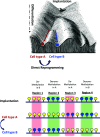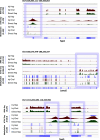Transdifferentiation occurs without resetting development-specific DNA methylation, a key determinant of full-function cell identity
- PMID: 39292740
- PMCID: PMC11441492
- DOI: 10.1073/pnas.2411352121
Transdifferentiation occurs without resetting development-specific DNA methylation, a key determinant of full-function cell identity
Abstract
A number of studies have demonstrated that it is possible to directly convert one cell type to another by factor-mediated transdifferentiation, but in the vast majority of cases, the resulting reprogrammed cells are unable to maintain their new cell identity for prolonged culture times and have a phenotype only partially similar to their endogenous counterparts. To better understand this phenomenon, we developed an analytical approach for better characterizing trans-differentiation-associated changes in DNA methylation, a major determinant of long-term cell identity. By examining various models of transdifferentiation both in vitro and in vivo, our studies indicate that despite convincing expression changes, transdifferentiated cells seem unable to alter their original developmentally mandated methylation patterns. We propose that this blockage is due to basic developmental limitations built into the regulatory sequences that govern epigenetic programming of cell identity. These results shed light on the molecular rules necessary to achieve complete somatic cell reprogramming.
Keywords: development; epigenetics; metaplasia; plasticity; regulation.
Conflict of interest statement
Competing interests statement:The authors declare no competing interest.
Figures





References
-
- Waddington C. H., The Strategy of Genes (George Allen and Unwin, London, UK, 1957).
-
- Cedar H., Bergman Y., Programming of DNA methylation patterns. Annu. Rev. Biochem. 81, 97–117 (2012). - PubMed
-
- Kafri T., et al. , Developmental pattern of gene-specific DNA methylation in the mouse embryo and germ line. Genes Dev. 6, 705–714 (1992). - PubMed
-
- Monk M., Boubelik M., Lehnert S., Temporal and regional changes in DNA methylation in the embryonic, extraembryonic and germ cell lineages during mouse embryo development. Development 99, 371–382 (1987). - PubMed
-
- Brandeis M., et al. , Sp1 elements protect a CpG island from de novo methylation. Nature 371, 435–438 (1994). - PubMed
MeSH terms
Grants and funding
LinkOut - more resources
Full Text Sources

